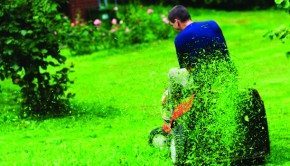Living Off the Land
Low- and No-Cost Ways to Feed a Family
Whether it’s membership in a food co-op, tending a backyard garden or balcony tomato plant or foraging in the woods for edibles, living off the land means cleaner, fresher and more nutritious food on the table.
To switch from running to the market to stepping into a home garden for fresh produce, it’s best to start small. Smart gardeners know it’s easy to be overwhelmed by a big plot so they plan ahead with like-minded friends to swap beans for tomatoes or zucchini for okra to add variety. If one household is more suited to freezing excess harvests while another cans or dehydrates, more trades are in the offing. Start kids by having them plant radishes, a crop that will give even the most impatient child quick results.
“You can’t do everything yourself,” counsels Kathie Lapcevic, a farmer, freelance writer and teacher in Columbia Falls, Montana. “I have a huge garden, expanded now into about 7,000 square feet, that provides 65 percent of what our family eats,” she says. “On the other hand, I can’t imagine life without nut butter and found I can’t grow Brussels sprouts. A few trips to the store are inevitable.”
Lapcevic plants non-GMO, heirloom varieties of seeds in her chemical-free garden. She adds a new variety or two each year and reminds peers that it takes a while to build good soil. Three years ago, she also added pollinator beehives on the property. Their honey reduces the amount of processed sugar the family uses.
From Libby, Montana, Chaya Foedus blogs on her store website PantryParatus.com about kitchen self-sufficiency. “Foraging is a good way to give children a full sensory experience,” she remarks. “We turn a hike into a mission to find and learn about specific foods, where they come from and what to do with them.” To start, select one easily identifiable item for the kids to pick. “In Libby, that’s huckleberries,” says Foedus. “Similar to blueberries, they grow on a bush, so they’re easy to see and pick. Huckleberries don’t grow in captivity—it’s a completely foraged economy.”
Michelle Boatright, a graphic designer and hunter of wild plants in Bristol, Tennessee, learned eco-friendly ways to forage from a game warden friend. Five years later, her bookcase holds 30 books on edible plants—she brings two with her on excursions. “When in doubt, leave a plant alone. It’s too easy to make a mistake,” she advises. “Know how to harvest, too—take only about 10 percent of what’s there and leave the roots, so it can grow back.
“For example, ramps, a wild leek, take seven years to cultivate,” says Boatright. “Overharvesting can wipe out years’ worth of growth. In Tennessee, it’s illegal to harvest ramps in state parks. Mushrooms are more apt to regrow, but leave the small ones.”
As for meat, “I was raised to never shoot a gun, but to make my own bows and arrows,” recalls Bennett Rea, a writer and survivalist in Los Angeles, California. “Dad used Native American skills, tools and viewpoints when he hunted. Bow hunting kept our family from going hungry for a few lean years and was always done with reverence. It’s wise to take only what you need, use what you take and remember an animal gave its life to sustain yours.”
Rea uses several methods for obtaining local foods. “Living here makes it easier due to the year-round growing season. For produce, I volunteer for a local CSA [community supported agriculture] collective. One hour of volunteering earns 11 pounds of free, sustainably farmed, organic produce—everything from kale to tangerines to cilantro.
“Bartering is also an increasingly popular trend,” he notes. “I make my own hot sauce and trade it for high-end foods and coffee from friends and neighbors. Several of us have now rented a plot in a community garden to grow more of our own vegetables. I only buy from stores the items I can’t trade for or make myself—usually oats, milk, cheese and olive oil.”
Truly good food is thoughtfully, sustainably grown or harvested. It travels fewer miles; hasn’t been sprayed with toxins or been chemically fertilized; is fresh; ripens on the plant, not in a truck or the store; and doesn’t come from a factory farm. The old saying applies here: “If you want something done right, you have to do it yourself.”
Cooking with Wild Foods
Christopher Nyerges, of Pasadena, California, author of Guide to Wild Food and Useful Plants and Foraging California, has spent 40 years teaching others to find free food safely as part of an ongoing curriculum (SchoolOfSelf-Reliance.com). He knows, “Wherever you live, common weeds and native plants can supplement food on the table.”
He particularly likes to use acorns as a food extender, grinding them into a powder and mixing it 50/50 with flour to make bread and pancakes. For greens, he likes lamb’s quarters (Chenopodium album), a weed that crowds out native plants, but is easily found, nutritious and versatile. He uses the leaves like spinach and adds the seeds to soup or bread batter. He likens it to quinoa.
Nyerges characterizes himself as a lazy gardener. “Forget having a traditional lawn. Grow food, not grass,” he says. “I like plants that take care of themselves and then of me.”
Purslane (Portulaca oleracea) and New Zealand spinach (Tetragonia tetragonioides) are good edible ground covers. Purslane leaves add a lemon-pepper crunch. “If the neighbors complain, plant some nasturtiums—they’re pretty and good to eat, too,” he notes. Varieties of cactus, like the prickly pear, are also edible; remove the thorns and cook the pads with tofu or eggs.
“I’m all for using technology, but know how to get by without it, too,” Nyerges advises. “There’s no such thing as total self-sufficiency. What we can be is self-reliant and knowledgeable users. Begin by learning and applying one thing.” He’s found, “There aren’t directions to follow; the path to self-reliance is different for each person.”
<












